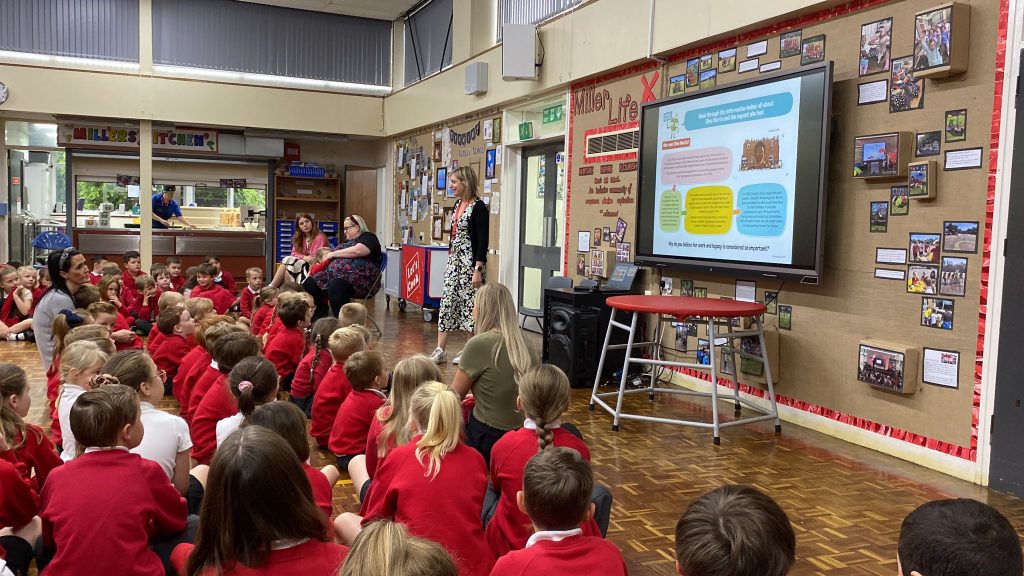How to make the most out of your assembly
If you’re looking for ways to invigorate your school assemblies, or perhaps try something new, this blog is for you.
Our Education Consultants have shared their 5 top tips for making assemblies engaging, informative and fun, to get children interested and inspired!

Let children lead
Studies show that teaching and sharing knowledge is one of the most effective ways to learn, so why not apply this to assemblies?
Pupil-led assemblies or audience participation sessions are great ways to actively involve children and increase their engagement levels.
Perhaps children could present or act in your assembly, or research and prepare assembly content.
Alternative pupil responses
Picking on pupils to talk or answer a question in an assembly setting can quickly dull enjoyment levels.
With this in mind, ensure you mix up the ways in which you collect answers and opinions from children.
This could be ‘hands up if…’, ‘stand up if…’, ‘tell the person next to you…’
Varying how you ask children to think about and respond to your assembly topic can help keep the session engaging and fun.
Vary your delivery format
Including a mixture of formats in your assembly can make it interesting for children!
Try a combination of images, videos, role play and discussion. Different formats will also appeal to a range of learning styles.
Remember to consider the age group and developmental stage of your audience when planning the assembly format.
Invite special guests
Why not research prominent or local people linked to your topic, and ask them to present an assembly in school?
For example, a researcher from a local university could discuss climate change, or a local sportsperson could speak about the challenges they have faced.
Introducing real people with stories and experiences can support what you are teaching, inspire children, and make your assembly informative, fun and engaging!
Make it meaningful
To create a bigger impact, ensure there are opportunities for children to act on what they have learnt in the assembly.
This could be supporting them to start a petition, fundraise, or write a letter to someone involved in the topic they have explored in assembly.
Connecting topics in assemblies and the classroom can further consolidate learning, and make room for children to develop their interests.
Children may wish to act on a topic they have learnt about during school time or at home. Regardless, ensure you support them to maximise the impact of your assembly.
We hope these tips are useful to breathe new life into your assemblies!
